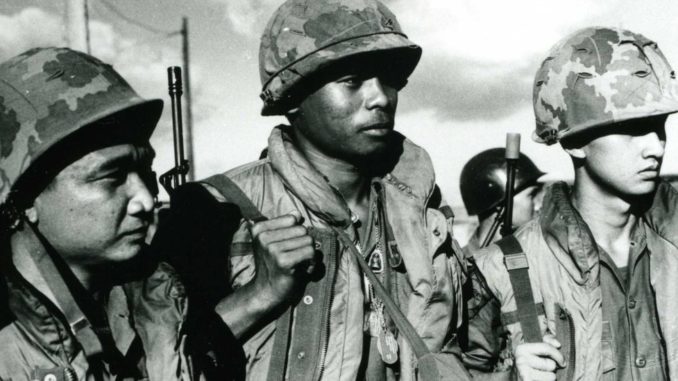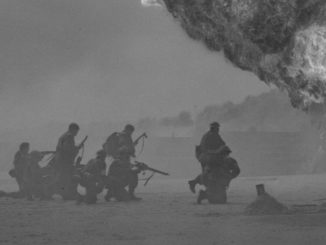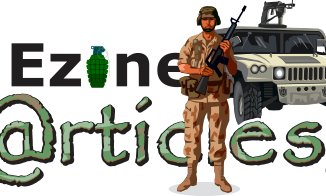
‘VIETNAM – A War Lost and Won’ by Nigel Cawthorne was first published in 2003 by Arcturus Publishing Limited in the UK. Nigel Cawthorne, who was born in Chicago, the United States, is an American-born British writer of fiction and non-fiction, and an editor.
The book includes an introduction on what triggered one the worst wars in American war history. It has ten chapters followed by an epilogue, bibliography and index. Offered in paperback with high quality recycled material, for those who missed the Vietnam War era, this book is highly recommended as it provides a vivid, lucid and statistics on what actually went wrong in the war that had left a permanent black mark in American might and military superiority.
The front cover of this highly-informative book carries a watermark image of a soldier in full army gear at the background, and American troops crossing what looks like a typical Vietnamese paddy field aided by helicopters above. Surely these images are reminiscence of what frequently appear in Rambo, Platoon and Missing in Action Hollywood flicks.
It also provides the maps of Vietnam showing the disputed areas -the North and South, the very two territories that were in constant limelight throughout the war. Another map will aid the readers on the Tet Offensive which took place from January to February 1968. Not only that, the book has high-quality real life photos, photos shot in real battles, displaying the various assets of the American forces, the individuals who dictated the war from behind and other chronological evidences in what would be the only war that the Americans lost.
Written in simple yet precise language, the book offers abundance of numerical evidences and readers will be treated to overwhelming shocks and bounces. The statistical records revealed in this book will inform us that 46, 370 US servicemen were killed where more than 10,000 died from non-combat related causes and more than 100,000 wounded. The US government had spent a whopping USD 145billion, a massive amount for that time, for a worthless war that began in 1965 and ended in 1975, two years after the Paris Peace Accord.
The US lost 4, 865 helicopters, each costs about a quarter of a million dollars and eight million tons of bombs were dropped in Vietnam, Laos and Cambodia combined, a number far-out fetched the amount dropped during the whole of World War II (WW II). The B52, a pride of American hegemony, dropped USD200, 000 worth of bombs out of its bomb-bay doors on each mission. Readers will also get to identify the other assets of the US Army, from US UH 13 Helicopters known as Hueys, US Strike Patrol Boat (STAB), M60 Machine guns, the B52 Bomber, to US Phantom Jets used in Operation Rolling Thunder, were consistently mentioned throughout the book.
Another plus point of this book is that the author had distanced himself from all elements glaring to parochialism; regionalism and blind nationalism, hence neglected the aspect of one-sidedness in his views. According to the writer, more than 18million people were displaced during the war, and more than 3 per cent of South Vietnam was totally devastated beyond recognition.
Further revelations indicate that 18million gallons of defoliants were used in the war which resulted in severely handicapped and malformed babies. As many as 50,000 were still being detained as political prisoners- Prisoners of War (POWs) as until 1986 and the writer went on to further clarify that the after effect of the war had 865, 000 people fleeing the country seeking greener pastures elsewhere.
The writer also took a swipe at American soldiers during the war, mocking at their ignorance of being boastful in undermining the enemy’s strength. This was enhanced through the use of terms which were frequent among US servicemen in Vietnam at that time, like ‘gooks’ – a derogatory term referring to people of Asian descent in the US and ‘peasants’ – referring to the Vietnamese insurgents who predominantly consist of farmers. The lost to this army of peasants further ignited the fire of dire humiliation in the US.
The writer also further affirmed the fact that generally, the people of Vietnam has a special affinity with the soil of their country and the guerrilla warfare that the so-called peasant army fought, was fought till the last drop of blood unlike their counterpart who, on a major scale consists of reluctant draftees, some in their teenage years, fighting as soldiers manning the forefront of the bloody battle.
On war strategies, the writer pointed out that from day one, the superior army had got it all wrong. The Vietnamese had won the war through the most effective use of underground tunnels, used for centuries even before the invasion of the US army, against the likes of the Chinese and the French. The Vietnamese had tunnels running for hundreds of miles from the Cambodian border to the gates of Saigon. They had dormitories, workshops, hospitals, kitchens, headquarter facilities and supply depots built in inside these tunnels. Made of laterite clay, the surface becomes hardened like concrete once exposed to the scorching sun. With this information, the writer had revealed to the readers that it was indeed true that one of the main reasons on why the Americans had lost the war was because they were fighting an unseen enemy; frequently appearing out of nowhere, engaged the enemy in sudden combat, only then to disappear into thin air.
The book also introduces some interesting terms to the readers like ‘punji traps’ and ‘toe poppers’- the two most common booby traps used in Vietnam during the war. These are traps made with simple tropical resources – bamboos and punji sticks but the brutality they inflict on victims is mind-boggling. The book further confirmed that some 10,000 US servicemen lost at least one limb in Vietnam, more than in WW II and Korea put together.
The writer juggled his factual statements to and forth (Vietnam and the US) to keep readers abreast on the events taking place at home including the mass civil protests in the streets of New york, Washington DC and other major cities in the US, protesting the legitimacy of the war. One section also includes Martin Luther King (MLK), the Civil Rights Activist, who spoke out against the war, bringing to bear his enormous moral conviction and authority. The writer also did not hide his disgust, in exposing the Vietnam War as a war that is racially biased and divisive. African-Americans did not find it easy as middle-class white youths to evade the draft. One undisputable fact disclosed in the book was how African-Americans, who made up of about 23 per cent of the total population of the US Army killed in action in Vietnam, bore an unfair burden and how this feeling of being unfairly treated and sacrificed in a foreign war helped further fuel racial conflicts at home in the US. The Marines did not admit African-Americans until WW II. Vietnam was fundamentally the first war where blacks and whites fought side-by-side.
The current generation Y of the IT age will also get to recognize the ‘Hippies’ through this read. The ‘Hippies’ movement, which started in the 60s, around the same time when the war erupted, borrowed the ‘peace’ philosophy from MLK and the anti-war movement, was famous for their remark – ‘Make Love, Not War’.
The highlight of the book lies in the revelation, without an iota of secrecy, on how and why the world’s mightiest superpower had lost the war in Vietnam. The focus is Saigon (now Ho Chi Minh City), where prostitutes roamed and ‘serviced’, military brothels and hardcore addiction to Marijuana and opium were rampant among US servicemen. Drug abuse has a central theme of 1960s music and culture which was directly associated with the Vietnam War. Other deadly issues pertaining to the loss of morale and the decline in health among US servicemen were revealed in the form of the spread of Sexually Transmitted Diseases (STDs) which include gonorrhea or ‘clap’ and the Heinz 57 variety. Some of these diseases were spread to US servicemen through deliberate means under the disguise of tactics by the Vietcong.
The book also engulfs readers into the pathos of the ‘Massacre at MyLai’, regarded as one the most atrocious act of killing of people, including children in war history. The man responsible for this appalling act was Lt. William L. Calley. The war had left a non- erasable stigma in eroding human dignity and the world realized the rest of the world did not operate in the same moral vacuum of Vietnam. The writer also revealed in his closure that public hostility towards US servicemen who returned home after the debacle further escalated serious psychological and social quagmire and it was reported in 1980 that more than 700, 000 war veterans experienced some sort of emotional or psychological disorder called Post-Traumatic Stress Disorder (PSTD) after their return to home soil.
Source by RG Mohan Rethnaswamy



